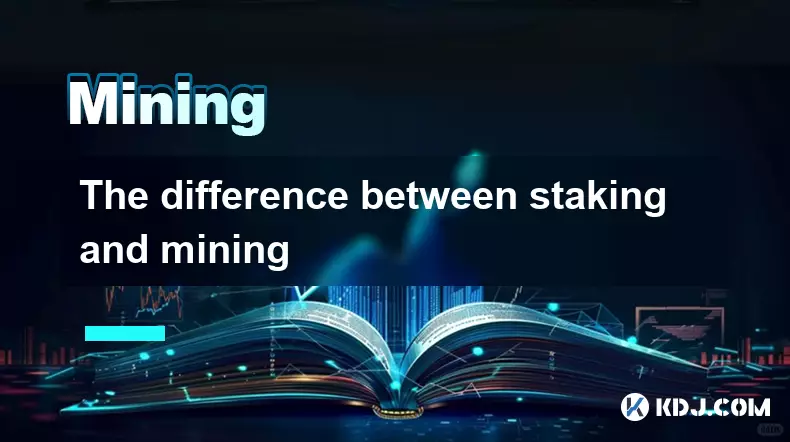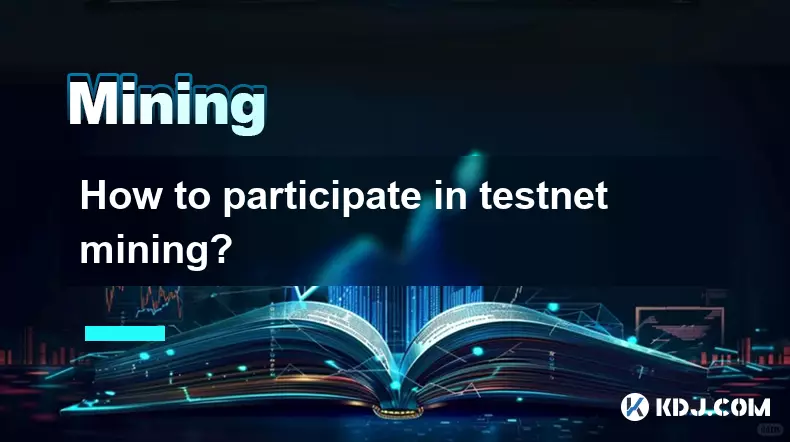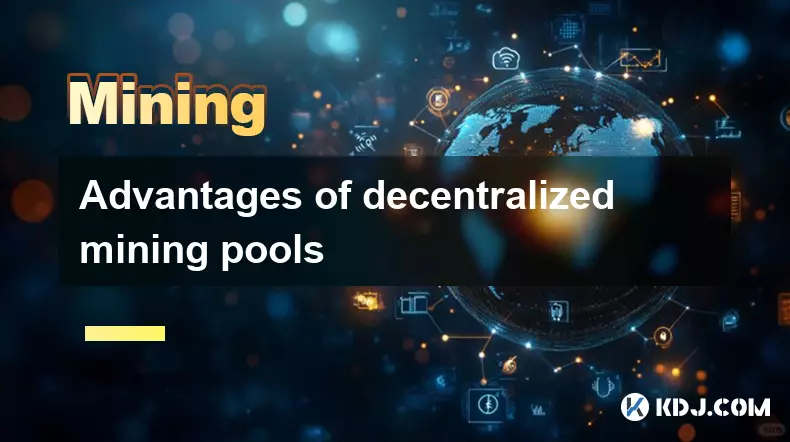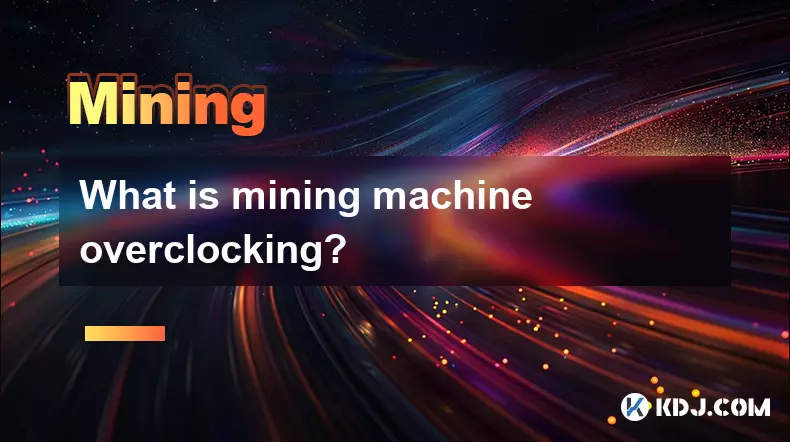-
 bitcoin
bitcoin $123963.239194 USD
1.37% -
 ethereum
ethereum $4529.082464 USD
1.07% -
 xrp
xrp $2.983640 USD
0.71% -
 tether
tether $1.000287 USD
0.02% -
 bnb
bnb $1179.874393 USD
2.99% -
 solana
solana $230.633678 USD
1.55% -
 usd-coin
usd-coin $0.999835 USD
0.03% -
 dogecoin
dogecoin $0.254240 USD
1.34% -
 tron
tron $0.341176 USD
0.15% -
 cardano
cardano $0.842285 USD
0.52% -
 hyperliquid
hyperliquid $48.537896 USD
-0.86% -
 chainlink
chainlink $21.863092 USD
-0.84% -
 ethena-usde
ethena-usde $0.999743 USD
-0.07% -
 sui
sui $3.579561 USD
-0.18% -
 stellar
stellar $0.403418 USD
2.67%
Is IRON mining profitable?
IRON mining uses GPU-powered Proof-of-Work with zk-SNARKs for privacy, offering 10 IRON per block every 15 seconds, but profitability depends on hardware, electricity costs, and market price.
Jul 27, 2025 at 07:49 am

Understanding IRON Mining and Its Mechanism
IRON mining refers to the process of validating transactions and securing the Iron Fish network, a privacy-focused cryptocurrency that uses the Proof-of-Work (PoW) consensus mechanism. Unlike transparent blockchains like Bitcoin, Iron Fish ensures transaction confidentiality through zk-SNARKs (Zero-Knowledge Succinct Non-Interactive Arguments of Knowledge), which allows miners to verify transactions without exposing sender, receiver, or amount details. The native token, IRON, is awarded to miners as a block reward for their computational efforts.
Mining IRON involves running specialized software that solves cryptographic puzzles to add new blocks to the blockchain. The current block reward is 10 IRON per block, with a block time of approximately 15 seconds. This high block frequency increases the number of mining opportunities compared to slower chains. However, profitability depends on multiple variables, including hashrate, electricity cost, hardware efficiency, and market price of IRON.
Hardware Requirements and Setup for IRON Mining
To mine IRON efficiently, you must use hardware capable of handling the Equihash-BTG (150,5) algorithm, which is memory-hard and favors devices with high memory bandwidth. While CPUs can mine IRON, GPUs are significantly more efficient. Recommended GPUs include NVIDIA RTX 3060 Ti, RTX 3070, or AMD RX 6700 XT due to their balance of hashrate and power consumption.
To set up an IRON miner:
- Download the official Iron Fish node software from the GitHub repository.
- Install compatible GPU drivers and CUDA (for NVIDIA) or ROCm (for AMD).
- Generate a wallet address using the
ironfish wallet:createcommand. - Configure the miner to point to a mining pool or mine solo.
- Launch the miner with parameters such as pool URL, wallet address, and worker name.
Example command to start mining:
ironfish miner:start --pool pool.ironfish.network:9037 --name MyWorker --public-address YOUR_IRON_WALLET_ADDRESSEnsure your system has at least 8 GB RAM and a stable internet connection. Overclocking your GPU can increase hashrate but may reduce hardware lifespan or increase power draw.
Calculating Profitability: Key Metrics and Tools
Profitability in IRON mining hinges on several measurable factors. Use online calculators like WhatToMine or MinerStat to estimate returns. Input the following:
- GPU model and average hashrate (e.g., RTX 3060 Ti ≈ 260 Sol/s)
- Power consumption in watts (e.g., 150W under load)
- Electricity cost per kWh (e.g., $0.12)
- Current IRON price in USD (e.g., $0.40)
The formula for daily profit is:
Daily Revenue = (Hashrate / Network Hashrate) × (86400 / 15) × 10 × IRON PriceDaily Cost = (Power Consumption / 1000) × Electricity Rate × 24Net Profit = Daily Revenue - Daily CostFor instance, a single RTX 3060 Ti on a network hashrate of 200 MSol/s might generate around 0.8 IRON per day. At $0.40 per IRON, that’s $0.32 in revenue. With $0.43 in electricity cost (150W × 24h × $0.12/kWh), this setup would operate at a loss. Profitability improves if electricity is cheaper or IRON price rises.
Joining a Mining Pool vs. Solo Mining
Most IRON miners join mining pools to receive more consistent payouts. Solo mining is possible but unlikely to yield rewards unless you control a significant portion of the network hashrate.
Popular IRON mining pools include:
- pool.ironfish.network
- flypool.org/iron
- 2miners.com
Pools charge a 1% to 3% fee and use payout models like PPLNS (Pay Per Last N Shares). To join:
- Register on the pool’s website and create a worker.
- Configure your miner with the pool’s stratum URL and port.
- Monitor your hashrate and pending balance via the pool dashboard.
Pools reduce variance, ensuring small but frequent payouts. For example, a miner contributing 500 Sol/s to a 100 MSol/s pool earns roughly 5% of block rewards, paid out every few hours. Always verify pool reliability and uptime before committing resources.
Factors That Influence IRON Mining ROI
The return on investment (ROI) for IRON mining fluctuates due to external and internal variables. Network difficulty adjusts dynamically based on total hashrate. As more miners join, difficulty increases, reducing individual rewards. Conversely, miner exits lower difficulty and boost profitability temporarily.
Market volatility plays a major role. If the IRON price drops from $0.50 to $0.20, revenue halves, potentially turning profitable rigs into loss-making ones. Conversely, a price surge can make marginal setups highly lucrative.
Geographic electricity rates are decisive. Miners in regions with $0.05/kWh or lower (e.g., parts of Canada, Iceland, or hydro-powered areas) have a structural advantage. Those paying $0.20/kWh or more may struggle to break even unless using highly efficient hardware.
Hardware depreciation must also be considered. A GPU costing $400 with a 2-year lifespan must generate enough profit within that window to justify the investment. Frequent upgrades may be needed as network hashrate grows.
Troubleshooting Common IRON Mining Issues
Miners often encounter technical obstacles. Common problems and solutions include:
- Low reported hashrate: Verify GPU drivers are updated, ensure no thermal throttling (keep temps below 75°C), and check for background processes consuming resources.
- Connection refused by pool: Confirm the pool URL and port are correct, disable firewalls temporarily, and ensure the node is synced.
- Wallet not receiving funds: Double-check the public address in the miner config, and verify payout thresholds on the pool (e.g., minimum 1 IRON payout).
- High stale shares: Reduce overclocking, improve internet latency, or switch to a geographically closer pool server.
Use the ironfish status command to monitor node sync and mining activity. Logs are stored in ~/.ironfish/logs/ for deeper diagnostics.
Frequently Asked Questions
Can I mine IRON with an ASIC?No, IRON uses the Equihash-BTG algorithm, which is resistant to ASICs. Mining is limited to GPUs and CPUs, preventing centralization by specialized hardware.
How often are IRON blocks mined?A new block is mined every 15 seconds, leading to approximately 5,760 blocks per day. This high frequency increases mining opportunities but also intensifies competition.
Is cloud mining IRON viable?Most cloud mining services do not support IRON. Even if available, contracts often yield negative returns due to high fees and low IRON price. Self-mining with personal hardware is more transparent and controllable.
What happens to block rewards over time?IRON follows a fixed emission schedule with no halving events. Miners will always receive 10 IRON per block, making long-term supply inflation predictable but dependent on adoption for value retention.
Disclaimer:info@kdj.com
The information provided is not trading advice. kdj.com does not assume any responsibility for any investments made based on the information provided in this article. Cryptocurrencies are highly volatile and it is highly recommended that you invest with caution after thorough research!
If you believe that the content used on this website infringes your copyright, please contact us immediately (info@kdj.com) and we will delete it promptly.
- BlockDAG, DOGE, HYPE Sponsorship: Crypto Trends Shaping 2025
- 2025-10-01 00:25:13
- Deutsche Börse and Circle: A StableCoin Adoption Powerhouse in Europe
- 2025-10-01 00:25:13
- BlockDAG's Presale Buzz: Is It the Crypto to Watch in October 2025?
- 2025-10-01 00:30:13
- Bitcoin, Crypto, and IQ: When Genius Meets Digital Gold?
- 2025-10-01 00:30:13
- Stablecoins, American Innovation, and Wallet Tokens: The Next Frontier
- 2025-10-01 00:35:12
- NBU, Coins, and Crypto in Ukraine: A New Yorker's Take
- 2025-10-01 00:45:14
Related knowledge

The difference between staking and mining
Sep 24,2025 at 05:18am
Understanding Staking in the Cryptocurrency Ecosystem1. Staking involves holding funds in a cryptocurrency wallet to support the operations of a block...

How to participate in testnet mining?
Sep 22,2025 at 09:18am
Understanding Testnet Mining in the Crypto Ecosystem1. Testnet mining is a method used by blockchain developers to simulate real-world conditions on a...

How to dispose of abandoned mining machines?
Sep 19,2025 at 08:19pm
Assessing the Condition of Abandoned Mining Rigs1. Begin by inspecting each mining machine for visible damage, corrosion, or missing components. Machi...

How to identify high-quality mining pools?
Sep 21,2025 at 03:19pm
Reputation and Track Record1. A mining pool’s reputation is built over time through consistent performance and transparency. Pools that have operated ...

Advantages of decentralized mining pools
Sep 20,2025 at 04:36pm
Enhanced Security and Resistance to Censorship1. Decentralized mining pools operate on blockchain-based smart contracts, eliminating the need for a ce...

What is mining machine overclocking?
Sep 21,2025 at 07:19pm
Understanding Mining Machine Overclocking1. Mining machine overclocking refers to the process of increasing the operating frequency of a cryptocurrenc...

The difference between staking and mining
Sep 24,2025 at 05:18am
Understanding Staking in the Cryptocurrency Ecosystem1. Staking involves holding funds in a cryptocurrency wallet to support the operations of a block...

How to participate in testnet mining?
Sep 22,2025 at 09:18am
Understanding Testnet Mining in the Crypto Ecosystem1. Testnet mining is a method used by blockchain developers to simulate real-world conditions on a...

How to dispose of abandoned mining machines?
Sep 19,2025 at 08:19pm
Assessing the Condition of Abandoned Mining Rigs1. Begin by inspecting each mining machine for visible damage, corrosion, or missing components. Machi...

How to identify high-quality mining pools?
Sep 21,2025 at 03:19pm
Reputation and Track Record1. A mining pool’s reputation is built over time through consistent performance and transparency. Pools that have operated ...

Advantages of decentralized mining pools
Sep 20,2025 at 04:36pm
Enhanced Security and Resistance to Censorship1. Decentralized mining pools operate on blockchain-based smart contracts, eliminating the need for a ce...

What is mining machine overclocking?
Sep 21,2025 at 07:19pm
Understanding Mining Machine Overclocking1. Mining machine overclocking refers to the process of increasing the operating frequency of a cryptocurrenc...
See all articles










































































